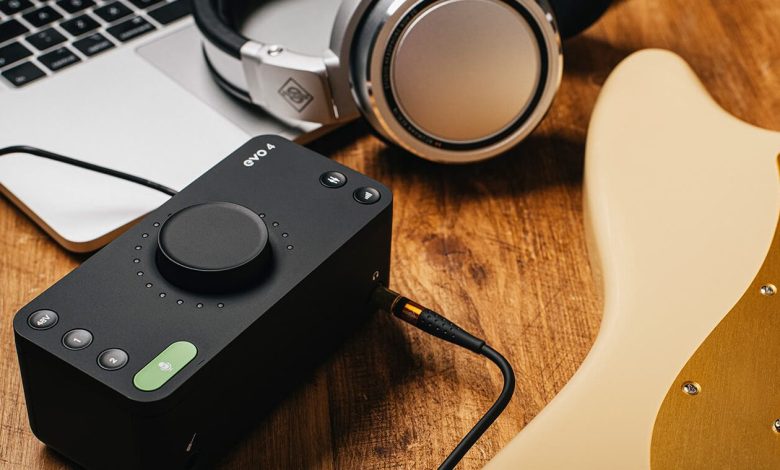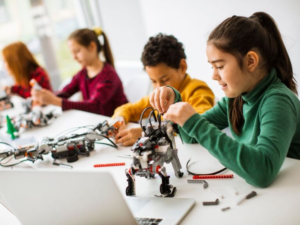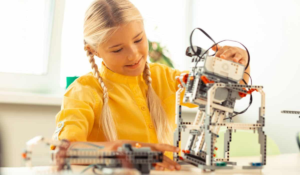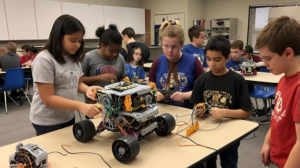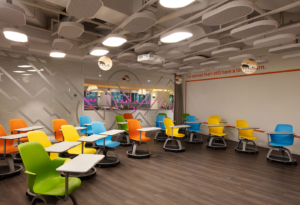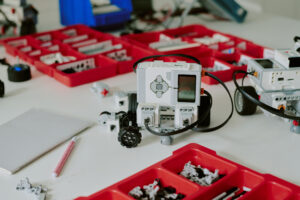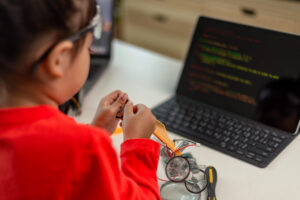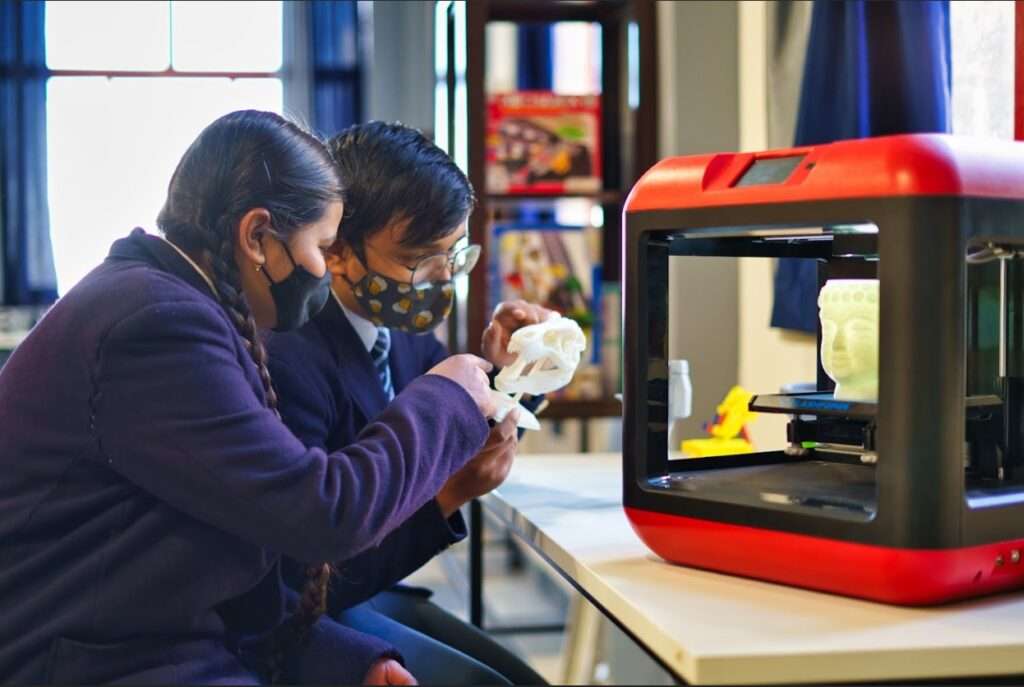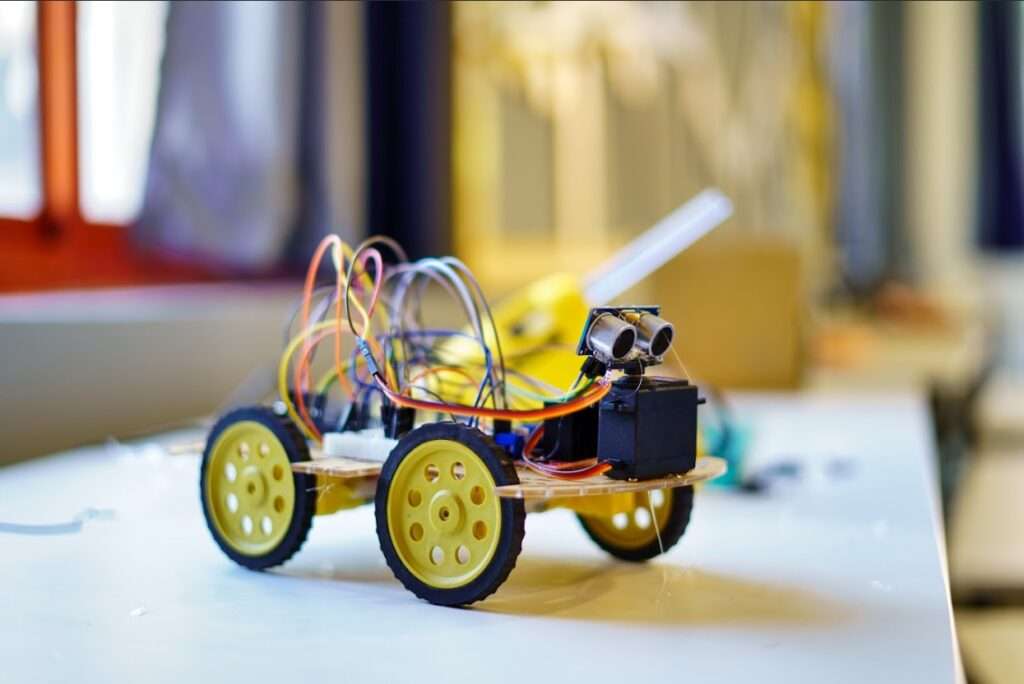When Maya first discovered Scratch, she was instantly captivated by its colorful interface and the endless possibilities it presented. Her first project was a simple animation of a cat dancing on the screen. But as she watched it loop over and over, something was missing. The visuals were engaging, and the movement was smooth, but something still seemed to be missing from the experience. That’s when she realized her project needed sound! A catchy tune, some funny sound effects, or even a voiceover could turn her simple animation into a fully immersive experience. And so began her journey into the world of sound in Scratch.
Ready to bring your Scratch projects to life with sound? Explore our beginner-friendly Scratch courses and start adding music and sound effects today!
Why Add Sound to Your Scratch Projects?
Sound is more than just background noise, it’s a powerful tool that can completely transform the way users experience your project. Studies indicate that incorporating sound can boost engagement and retention in educational tools by as much as 60%. For young coders, integrating sound into their projects can make the learning process more enjoyable and help them understand the importance of multi-sensory experiences in digital creation.
Curious about the impact of sound in action? Join our Scratch workshops and discover how sound design can elevate your projects.
Step-by-Step Guide to Adding Sound in Scratch
1. Choosing the Right Sound
Scratch offers a library of built-in sounds that range from animal noises to musical instruments. To access these, click on the “Sounds” tab and then “Choose a Sound.” You can filter by category, such as “Loops” or “Effects,” to find exactly what you need. If Scratch’s library doesn’t have what you’re looking for, you can also upload your own sounds. This could be a recording of your voice, a sound effect from another source, or even a piece of music you’ve created.
Need help finding the perfect sound? Check out our guide on sourcing and creating custom sounds.
2. Adding Music to Your Project
To add music, follow the same steps as adding any other sound. Once you’ve selected your music, you can program it to play at specific times in your project using blocks from the “Sound” category. The “Start sound” block is useful for triggering music at the beginning of an animation, while the “Play sound until done” block ensures the music plays through to the end of the clip.
Unlock advanced Scratch techniques! Enroll in our advanced Scratch programming course to learn how to make your projects even more interactive.
3. Synchronizing Sound with Actions
The key to effective sound design in Scratch is timing. Synchronize your sound effects with actions in your project to make it more dynamic. For instance, if you have a character jumping, use the “Play sound until done” block right after the “Jump” command to play a sound effect that matches the action.
According to a study by the Interactive Audio Research Group (2021), synchronized sound can improve user interaction by up to 35%, making your project not only more engaging but also more intuitive.
4. Customizing Sound for a Unique Experience
Scratch offers built-in tools that let you edit sounds directly within the platform. You can trim, loop, or change the pitch of any sound to better fit your project. For example, if you want to create a spooky atmosphere, you could lower the pitch of a sound or add an echo effect.
Want to stand out with custom sound design? Learn more about editing and creating unique sounds in Scratch.
Bringing It All Together: Maya’s Masterpiece
Maya’s once simple animation was now alive with the sound of a playful tune and perfectly timed sound effects. Every jump, slide, and turn of her character was accompanied by a matching sound that made the project feel professional and polished. Her friends and family were impressed, and she felt a new sense of pride in her work. Adding sound improved her project and deepened her understanding of how to create engaging digital experiences.
Ready to Create Your Own Masterpiece?
Adding sound effects and music to your Scratch projects can elevate them from good to great, just like it did for Maya. Whether you’re a beginner or an experienced coder, sound design is a skill worth mastering. Start experimenting with different sounds today and see how it transforms your projects. If you’re eager to dive deeper into the world of Scratch and coding, enroll in our courses to take your skills to the next level!

